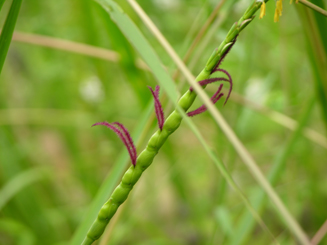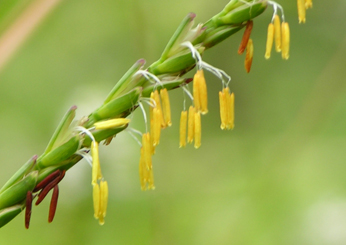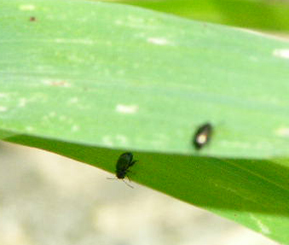Research Objectives
- Compare rates of infection of native and introduced grasses by foliar fungal and viral pathogens in naturally occurring populations.
- Quantify variation among host species in traits such as transmission rate and resource use in experimental monocultures.
- Use the data from monocultures and natural populations to predict the role of disease in competition between host species, and experimentally test these predictions across a soil fertility gradient.
Study Species
- Andropogon virginicus (Broom Sedge Bluestem)
- Paspalum dilatatum (Dallisgrass)
- Paspalum floridanum (Florida Paspalum)
- Paspalum notatum (Bahiagrass)
- Sorghum halepense (Johnsongrass)
- Tripsacum dactyloides (Eastern Gamagrass)
We are testing the joint effects of pathogens and resource competition on interactions between native and introduced grasses. My past work suggests that introduced species are commonly less infected by specialist pathogens than are their native competitors. However, introduced species may share generalist pathogens with the natives. The goal of this project is to test the effects of both specialist and generalist pathogens on the outcome of interactions between native and introduced grasses. I am particularly interested in apparent competition mediated by generalists through pathogen spillover. Some invaders may suppress natives indirectly via pathogen-mediated apparent competition. Alternatively, invader success may be reduced by apparent competition from native hosts. We will also be testing the effects of pathogens on resource use and competition for resources on an experimentally imposed soil fertility gradient. We are investigating foliar fungal pathogens, barley yellow dwarf viruses, and aphid-vectored potyviruses in a number of native and introduced grass species. This work is based at the North Carolina Botanical Garden’s Mason Farm Biological Reserve. It was funded by NSF through 2008.
|
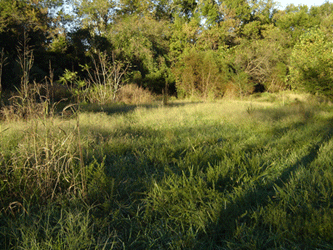 One of the old fields at Mason Farm Biological Reserve, adjacent to our chief experimental field. One of the old fields at Mason Farm Biological Reserve, adjacent to our chief experimental field.
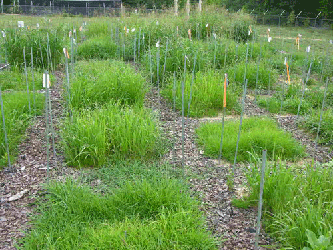
In 2006 we established long-term experimental monocultures of native and introduced grass species at Mason Farm Biological Reserve. In addition to high and low soil fertility treatments, we imposed an above-ground fungicide treatment to exclude foliar fungal pathogens.
|
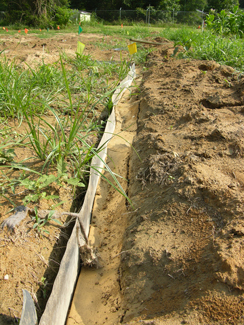

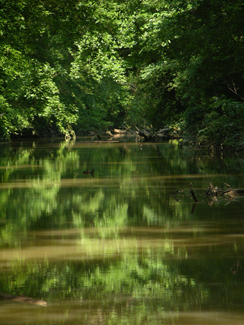
 One of the old fields at Mason Farm Biological Reserve, adjacent to our chief experimental field.
One of the old fields at Mason Farm Biological Reserve, adjacent to our chief experimental field.
